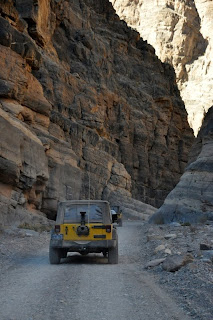We picked a cool day to visit an area with higher elevations but it dawned bright and clear, so why not? Mount Potosi is south of us and 45 miles north of Las Vegas. It was our understanding that the road to Potosi Peak is gated and locked. Reaching the summit at approximately 8,500 ft. is only possible on foot. The lesser Potosi Peak at 6,250 ft is, however, reachable by vehicle.
Just a short distance offroad our views were already marvelous.
 And snow too although we drove through none!
And snow too although we drove through none!
 In 2005 a lightning strike started a fire that was to consume more than 33,000 acres. It's amazing the comeback in only 4 years in an area that receives minimal precipitation.
In 2005 a lightning strike started a fire that was to consume more than 33,000 acres. It's amazing the comeback in only 4 years in an area that receives minimal precipitation.
 Joshua Tree roots are alive and sending up new shoots everywhere we look.
Joshua Tree roots are alive and sending up new shoots everywhere we look.
 The contours of the land are fascinating.
The contours of the land are fascinating.




 And snow too although we drove through none!
And snow too although we drove through none!
 In 2005 a lightning strike started a fire that was to consume more than 33,000 acres. It's amazing the comeback in only 4 years in an area that receives minimal precipitation.
In 2005 a lightning strike started a fire that was to consume more than 33,000 acres. It's amazing the comeback in only 4 years in an area that receives minimal precipitation.
 Joshua Tree roots are alive and sending up new shoots everywhere we look.
Joshua Tree roots are alive and sending up new shoots everywhere we look.
 The contours of the land are fascinating.
The contours of the land are fascinating.



We reached the peak and were treated to this view of the Las Vegas Strip 45 miles distant. This is the place to be to watch the sun go down and the city lights come to life. The road up is graded and in good condition but constantly twists and turns. It has no shoulders or guardrails. It also climbs 1,000 ft in the last mile. I'm not sure how confident I would be of a safe descent in the dark......
































































